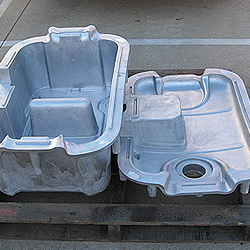
Do's and Don’ts in Non-Ferrous Metal Casting
November 21, 2016All the processes that define the metal-working industry are fascinating, but let's pause in this diligent endeavour for a moment. Take a breath, and use this rest period to instead look at the do's and do not's in non-ferrous metal casting.
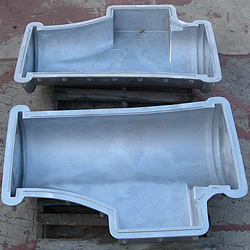
Most Common Alloys Used In Die Casting
November 14, 2016Instead of aimlessly pointing out the most common alloys used in die casting technology, why don't we apply some intelligence to the matter? First of all, the technique favours non-ferrous metals, so walk that pointing finger over to aluminium.

Differences between Low Pressure and High Pressure Die Casting
October 28, 2016Two dominant forces in the castings industry shape and condition metal products. First, scorching temperatures liquefy rigid metals. The amorphous alloys are then subjected to various casting processes.
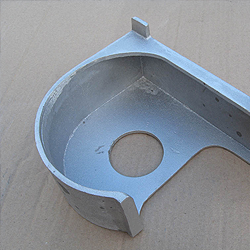
Differences between Shotblasting and Sandblasting
October 17, 2016The engineering labels employed here make these terms sound aggressive, explosively so, but the differences between shotblasting and sandblasting actually only refer to a surface finishing process, not a battlefield weapon.

How Different Types of Non-Ferrous Metals Respond To Different Moulding Temperatures
September 30, 2016Simply put, non-ferrous castings don't contain iron, so aluminium is part of this iron-free family tree, as is magnesium, copper, and a whole host of metals with special properties. In opening with this statement, we're setting the theme early in this discourse by talking about differences, for material variations abound in metallurgical science.
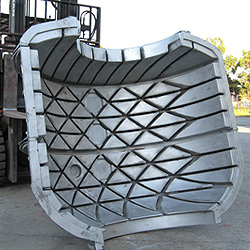
Powder Coating Non-Ferrous Metals
September 16, 2016Special finishes are often applied to non-ferrous parts at the post-processing stage. There are extra polishing and machining stages here, plus electroplating techniques and other finishing processes. They refine the component and improve key surface properties, but powder coating technology goes beyond such functional finishing work.
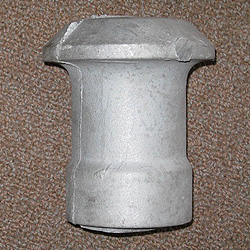
The Rotational Moulding Process
August 30, 2016Unique among high-end metal casting techniques, the rotational moulding process uses radial momentum to direct liquid metal flow. The equipment uses a moving arm to rotate the processing part on a biaxial plane, so operating pressures are kept low while the non-ferrous metal is distributed evenly across the surface of a component that exhibits low-to-medium detail level.
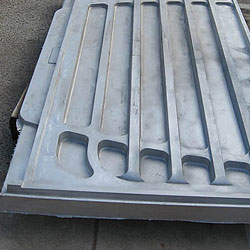
Electric Induction Versus Gas Melting of Aluminium Alloys: What's the Difference?
August 18, 2016The goal of this clash of the furnaces is to create a differential review, a critique that looks closely at electric induction versus gas melting as it relates to aluminium alloys. Both heat sources exude inordinate amounts of thermal energy, but they use very different firing processes to achieve similar results.

The Process of Metal Casting and Why Mould Matters?
July 29, 2016Negative impressions form the backbone of the metal casting industry. We'll hold off on listing the various mould materials for the moment, mostly because we're talking at a building bricks level. It's a spotlight we're using today, and that spotlight lands squarely on top of moulds, for no casting could be produced without these parts-fashioning hollow impressions.
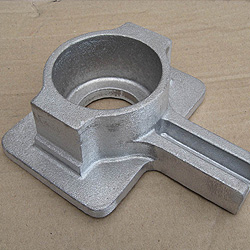
How Temperature Factors Affect Non-Ferrous Metal Castings
July 19, 2016Non-ferrous metal castings are equipped with unique properties, material characteristics that find their way into important engineering applications. But these metals liquefy across a wide thermal spectrum.
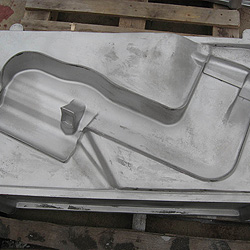
Definition of Rapid Prototype Aluminum Casting Process
June 30, 2016When a developing product leaves the drafting board, the prototyping phase allows engineers to evaluate features and generally fine-tune the concept. The Rapid prototype aluminum casting process works along the same lines, with the non-ferrous metal finding itself shaped into a basic outline that simulates the functions of the end product.

Definition and Applications of a Blow Moulding Die
June 17, 2016Engineering ingenuity is an obligatory part of a fabrication cycle when hollow products are the manufacturing focus. The void-dominated process has to ensure a material flows uniformly across and inside a mould surface.
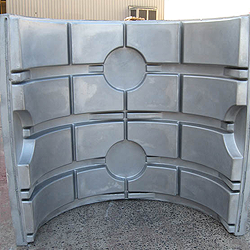
Scope and Functions of a Rotomould in Non-Ferrous Metal Casting
May 31, 2016If a castings buyer has been seduced by a particular fabrication process, there's a good chance he's looking at a product shaped by a rotomould cycle. Short for rotational moulding, the manufacturing technique leverages key axial forces, using those forces to uniformly distribute a soft metal until it forms a seam-free geometrical outline.

Properties of Non Ferrous Metals at Different Pouring Temperatures
May 19, 2016Every stage of a non-ferrous casting process can be viewed as a worthy property manipulator. Time is a major contributor to final hardness values, with shoddy pour rate management causing undesirable material defects, including liquid turbulence and substandard fill.

Different Types of Pattern Materials Used for Non-Ferrous Metal Castings
April 29, 2016In discussing casting technology, we've seen the mould described as a negative, a physically inverted version of the cast component. This precisely engineered cavity fills with molten metal and holds its shape as poured metal hardens.
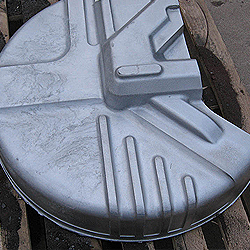
What are Vacuum Moulding Dies?
April 18, 2016Conventional vacuum casting techniques employ state-of-the-art processing environments when manufacturing structurally sound components. The castings are high in mechanical strength, geometrically complex, and cost effective to bulk produce.
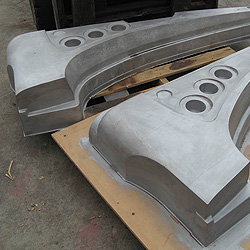
Most Common Uses and Applications of Non-Ferrous Metal Castings
March 31, 2016Artistry and technique have been and continue to be the bookending disciplines that rule non-ferrous metal castings. Artistry is discernible in the brass and bronze castings that are used in office fixtures and living room accents, the candle stands and faux antique figurines that adorn coffee tables.
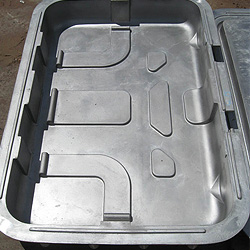
Non-Ferrous Metal Casting Technology and Its Basic Processes
March 17, 2016In working with the finest non-ferrous metals, the guesswork is taken out of the engineering process by adopting specialized casting techniques, methodologies that deliver competitively priced copper and aluminium components that exactly satisfy client specifications.

Aluminium Heat Treatment: An Overview
February 29, 2016Aluminium is a versatile metal, one that exhibits a lightweight profile. Used as a key material in many industries, the low weight of the material is a handy attribute but not one that works alone.

Aluminium Casting Process: A Few Ideas on How This Is Done
February 17, 2016During the first half of the last century, metallurgical science highlighted all things tough, the durability and rigidity of structural alloys. Aluminium casting leverages dramatically contrasting properties. Still known for its toughness, the space-age metal also has a reputation as a lightweight industrial material, one used in aeronautics and other critical weight-saving applications.

Definition of Moulding and Core Making Process
January 29, 2016Modern moulding disciplines leave mud pits and hot coals in the dust. The resulting castings still employ sand and clay, plaster and ceramic, to create finely detailed metal parts, but newly developed methodologies are currently adding contemporary features to the process.

Foundry Industry: Brief History and Definition
January 20, 2016All through prehistory, we've told tales of Vulcan and Hephaestus, the Gods of the volcanoes and the foundry. They were the mythological figures that caused the thunder to crack because they were hammering new weapons into shape for immortal warriors.
Recent posts
- Do's and Don’ts in Non-Ferrous Metal Casting
- Most Common Alloys Used In Die Casting
- Differences between Low Pressure and High Pressure Die Casting
- Differences between Shotblasting and Sandblasting
- How Different Types of Non-Ferrous Metals Respond To Different Moulding Temperatures
- Powder Coating Non-Ferrous Metals
- The Rotational Moulding Process
- Electric Induction Versus Gas Melting of Aluminium Alloys: What's the Difference?
- The Process of Metal Casting and Why Mould Matters?
- How Temperature Factors Affect Non-Ferrous Metal Castings
- Definition of Rapid Prototype Aluminum Casting Process
- Definition and Applications of a Blow Moulding Die
- Scope and Functions of a Rotomould in Non-Ferrous Metal Casting
- Properties of Non Ferrous Metals at Different Pouring Temperatures
- Different Types of Pattern Materials Used for Non-Ferrous Metal Castings
- What are Vacuum Moulding Dies?
- Most Common Uses and Applications of Non-Ferrous Metal Castings
- Non-Ferrous Metal Casting Technology and Its Basic Processes
- Aluminium Heat Treatment: An Overview
- Aluminium Casting Process: A Few Ideas on How This Is Done
- Definition of Moulding and Core Making Process
- Foundry Industry: Brief History and Definition